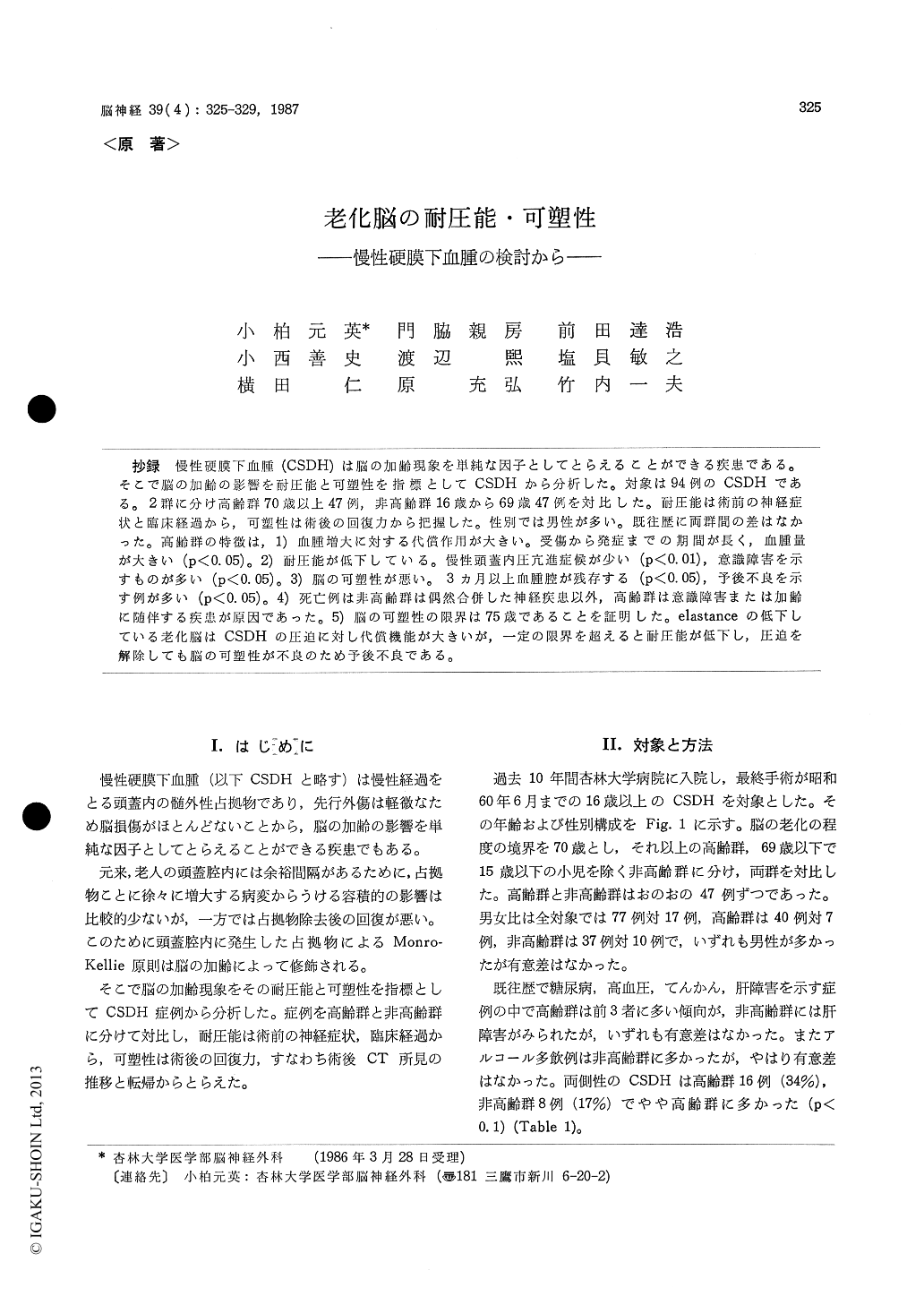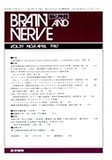Japanese
English
- 有料閲覧
- Abstract 文献概要
- 1ページ目 Look Inside
抄録 慢性硬膜下血腫(CSDH)は脳の加齢現象を単純な因子としてとらえることができる疾患である。そこで脳の加齢の影響を耐圧能と可塑性を指標としてCSDHから分析した。対象は94例のCSDHである。2群に分け高齢群70歳以上47例,非高齢群16歳から69歳47例を対比した。耐圧能は術前の神経症状と臨床経過から,可塑性は術後の回復力から把握した。性別では男性が多い。既往歴に両群間の差はなかった。高齢群の特徴は,1)血腫増大に対する代償作用が大きい。受傷から発症までの期間が長く,血腫量が大きい(p<0.05)。2)耐圧能が低下している。慢性頭蓋内圧亢進症候が少い(p<0.01),意識障害を示すものが多い(p<0.05)。3)脳の可塑性が悪い。3ヵ月以上血腫腔が残存する(p<0.05),予後不良を示す例が多い(p<0.05)。4)死亡例は非高齢群は偶然合併した神経疾患以外,高齢群は意識障害または加齢に随伴する疾患が原因であった。5)脳の可塑性の限界は75歳であることを証明した。elastanceの低下している老化脳はCSDEの圧迫に対し代償機能が大きいが,一定の限界を超えると耐圧能が低下し,圧迫を解除しても脳の可塑性が不良のため予後不良である。
A consecutive series of 94 patients with chronic subdural hematomas (CSDHs) was studied on com-pensation against intracranial pressure and tole-rance, and plasticity from compression of CSDHs, comparing between 47 cases of the aged group over 70 years of age and 47 cases of the younger group under 69 years of age.
Better compensation from compression of CSDHs in the aged group was demonstrated from the fact those of long duration from impact to onset of symptoms, few cases with signs of chronic intra-cranial hypertension and volume of hematoma over 100 ml. But, when CSDHs progressed over 100 ml in size, this compensation mechanism and also tolerance against increased intracranial pressure were deprived. Disturbance of consciousness and anisocoria were shown much more in the aged group on admission.
Patients in the aged group demonstrated re-duced brain reexpansion and poor clinical recovery during 3 months after surgery. CT performed on 3 months after surgery demonstrated persisting subdural fluid in 63% of cases in the aged group comparing with 8% of those in the younger group. There was significant difference about morbidity between two groups.
These study suggests that the plasticity and elas-tance in the aged brain reduce because of brain atrophy and impairment of cerebral blood flow, then brain reexpansion and clinical improvement may participate in delay regardless of release from compression of CSDHs. It may be urged that the critical age maintaining the plasticity of the brain in cases with SDHs in 75 years of age.

Copyright © 1987, Igaku-Shoin Ltd. All rights reserved.


